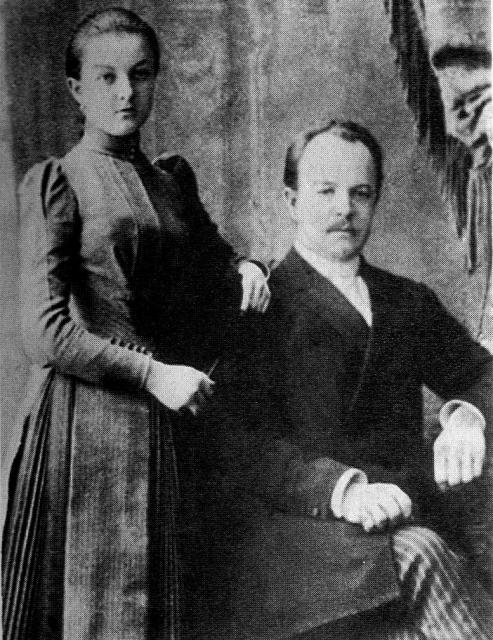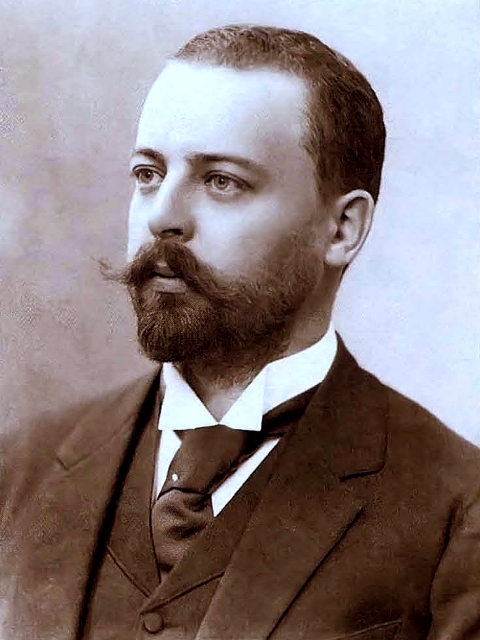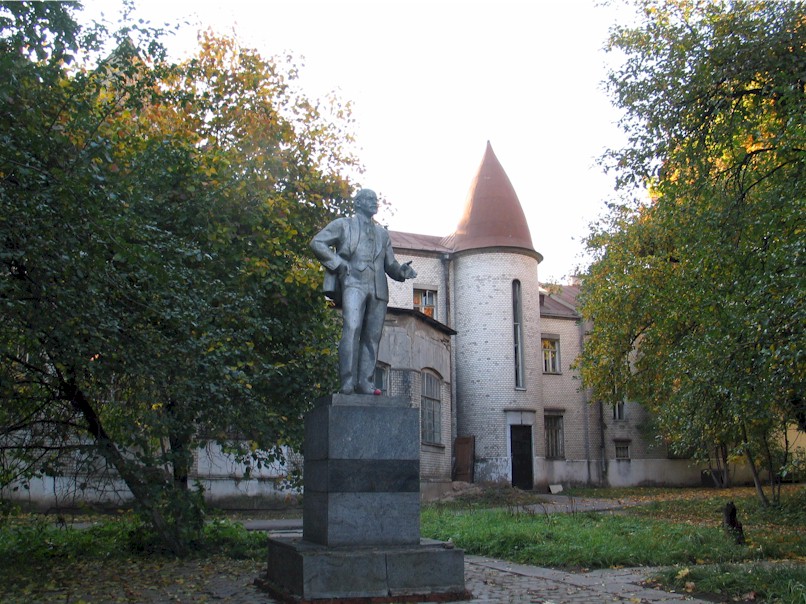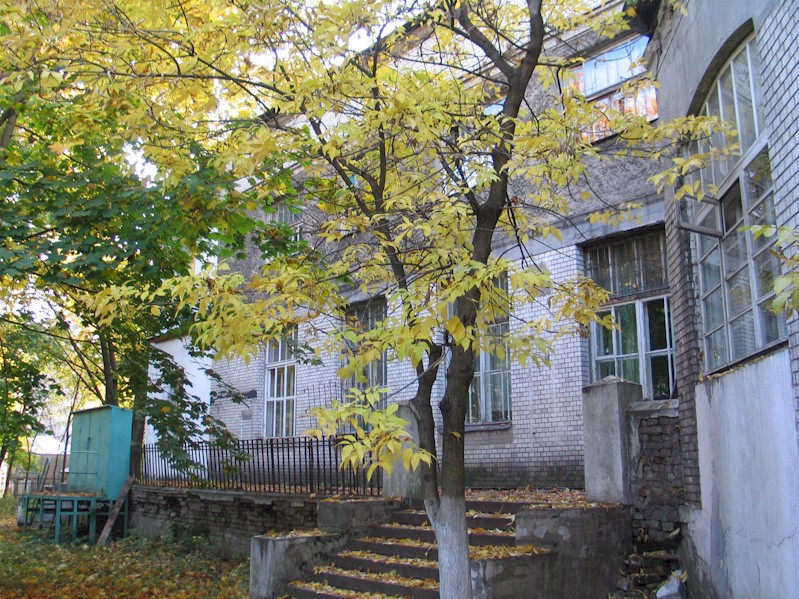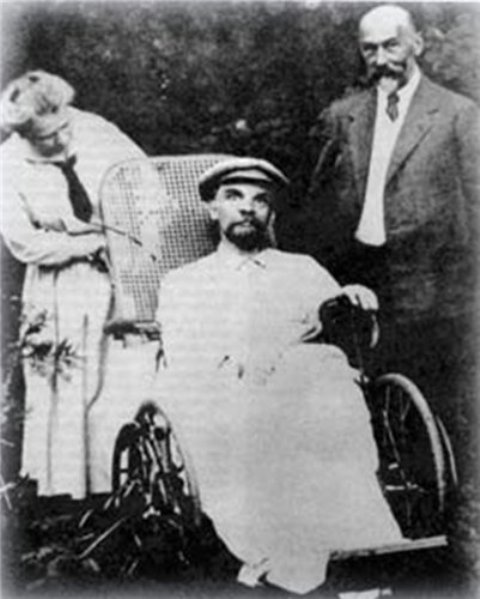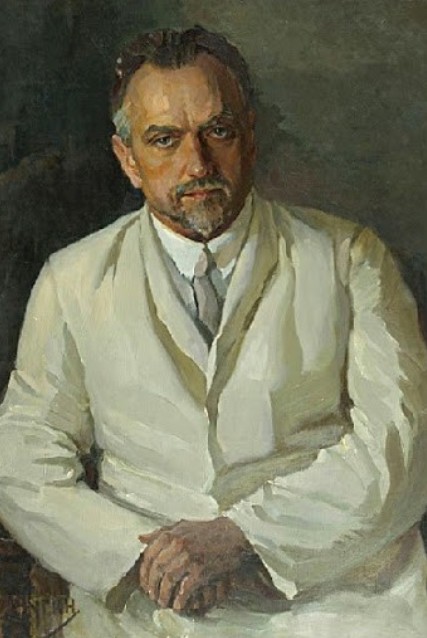The hospital of Stravinsky
English > Locations > Locations from the novel > The hospital of Stravinsky
Context
Leningradsky prospekt is one of the busiest arterial roads in Moscow these days. It's an extension of Tverskaya ulitsa, the longest shopping street of the city which leads, among other places, to the international airport Sheremetyevo in the northeast via the outskirts of Khimki. It's in the vicinity of this large artery that we arrive when we follow Bulgakov's directions to the psychiatric hospital of doctor Stravinsky.
Bulgakov describes a «famous psychiatric clinic, built recently on the outskirts of Moscow by the bank of the river», equipped with the latest machinery. «There is no such equipment even anywhere abroad. Scientists and doctors come especially to study our clinic. We have foreign tourists every day». That's where Ivan saw, beyond the grille, a balcony, and beyond that «the bank of a meandering river, and on its other bank a cheerful pine wood».
The Khimki City Hospital No. 1
It was probably the Больница городская № 1 [Bolnitsa gorodskaya No. 1] or the Khimki City hospital No. 1 which was the model for the hospital where Ivan first met the master. It was built in 1907, originally as a dacha for the businessman and benefactor Sergey Pavolvich Patrikeev (1867-1914).
Patrikeev was a member of the Moscow city council and honorary curator of the Tsar Aleksey School. The designer of the building was the famous architect Fyodor Osipovich Shekhtel (1859-1926), baptized as Franz Albert Shekhtel, who had already designed, the Moscow Art Theatre MKhAT in 1902, and of whom numerous buildings can still be seen in Moscow.
The Khimki City Hospital was fitted with the best equipment from Germany and Switzerland, and served as hospital, then restaurant, then rest home, then hospital again.
According to an announcement at the entrance of the building, Vladimir Ilich Lenin (1870-1924) has been treated here twice, in 1918 and 1920. The head physician of the sanatorium at that time, Fyodor Aleksandrovich Gete (1863-1938) was the doctor in attendance of Lenin and his family.
Despite his function in the hospital, Fyodor Alexandrovich Gete was not the prototype for doctor Stravinsky in The Master and Margarita. His model in real life was doctor Grigory Ivanovich Rossolimo (1860-1928), who headed the laboratory for experimental psychology at the Neurological Institute of the Moscow State University.
An hospitalisation as a mentally disturbed in that institute was a convenient method for the Stalin regime to eliminate «subversive elements» without ceremonies. During the Great Purge, from 1934 to 1939, a mercyless witch hunt against former opposition leaders within the party, but also against heads of state, prime ministers and party leaders of the regional republics, intellectuals, artists, trotskists, right wing adepts and ordinary citizens was held. It was a well-proven method to manipulate people at interrogations in such way - with or without physical violence - that they had to become ill. Or that they at least admitted being ill.
You can read more about doctor Stravinsky and his rel life prototype Grigory Rossolimo in the section Characters of this website.
Click here to tead more on doctor Stravinsky
Perhaps because of the relationship with Vladimir Lenin, the building in Khimki has been preserved, but the attitude of the authorities towards its preservation today is quite ambiguous. Although there is a sign attached to the entrance with the mention Памятник архитектуры [Pamyatnik arkhitektury] or Monument of architecture, it is hardly maintained. The Управлением государственного контроля охраны и использования памятников истории и культуры Москвы or the State Supervision Board on the protection and use of Moscow's historical and cultural monuments completely neglects it and it is a miracle that it surviced the construction of the large ring road MKAD and the fast-paced expansion of Khimki with shopping centres, large department stores and technology companies. Two of the largest Mega shopping centers in Russia are located near the hospital, which houses branches of the French supermarket Auchan and the Swedish furniture company Ikea.
The hospital is situated at Pravoberezhnaya 6 at the right bank of the Moscow river. The «cheerful pine wood» which Bulgakov describes in the novel could be the one close to the Речной вокзал [Rechnoy Vokzal] or the River Station.
Earlier versions
In his manuscript The Prince of Darkness, an earlier version of The Master and Margarita consisting of 13 chapters, Bulgakov wrote that Ivan was admitted to «a hospital in the Barskaya Forest». It's a reference to the Больница железнодорожников [Bolnitsa zheleznodorozhnikov] or the Hospital of the Railway Workers at the Pokrovsky-Stresnev Park, slightly further south than Patrikeev's dacha.
In The Proof of the Engineer, another version of the novel destroyed by the author, Ivan was taken to «a mental hospital named after Comrade Semashko». It is difficult to determine which hospital this was, because «Comrade» Nikolai Aleksandrovich Semashko (1874-1949) was People's Commissars of Public Health from 1918 to 1930, a position in which he was one of the founders of the Soviet Union's health care system, and many hospitals were named after him.
Living dangerously
The life of a webmaster does not just consist of sitting for hours in front of a pc like a nerd. If you want to keep your website up to date and keep your visitors interested, you have to go out every once and a while. Which sometimes implies some risks.
On Sunday, September 30, 2007, I wanted to stroll through Moscow again to make more photos of places related to The Master and Margarita. On my wish list was, among others, the clinic of doctor Stravinsky.
The weather was lovely - a beautiful Indian summer with a lovely sun - and, thanks to the negotiation skills of Elena Zavadskaya, a friend of mine who lives in Moscow, a taxi driver had been found prepared to help us in our search. After some efforts we found the place. Unfortunately, we were not allowed to enter the building to make photos of the interior, but yet, the main purpose was achieved.
On our way back, we suddenly noticed that we were followed by a black Lada, driving in our slipstream like a lunatic. On the extremely busy Leningradsky propspekt, he made several attempts to make us stop. But our driver, apparently not a softy neither, very skilfully succeeded in escaping from it each time. It wasn't fun, but it got really scary when a second, similar black Lada, showed up and started assisting the first one. This second car tried to come before us to make us stop, while the first one passed us from the right and the driver suddenly pointed a gun at us.
There was not much we could do, we were stuck and had to stop. While the man, with the gun in his hand, arrived at our car, our driver decided to play all or nothing. accelerated like a Formula 1 pilot and he succeeded in getting away. It was the beginning of a frantic chase, weaving between the cars of thousands of Muscovites who were returning from their dachas on this Sunday evening.
Maybe we were protected by higher forces, because a little further the милиция [militsiya] or police had blocked the Leningradsky prospekt. Other car drivers had called the police and they succeeded in stopping the madman. All well that ends well, one could say.
But the man, a Chechen who obviously hated the Russians from the bottom of his heart, not only admitted immediately that he had been threatening us with a loaded gun, he also spontaneously showed his licence for this gun to the police. We did not wait to see how it ended, we paid the taxi driver, and went on foot to the Bulgakov house on Bolshaya Sadovaya for a cup of coffee in the Café 302-bis.
Share this page |
locations
Moscow map

Have a look at the most important places from the novel at a single glance on a clickable map of Moscow.
